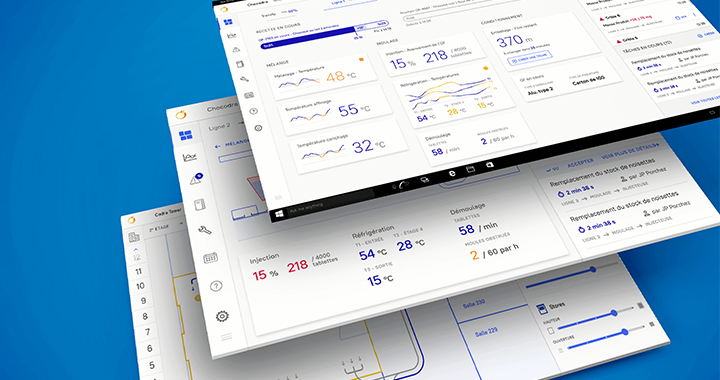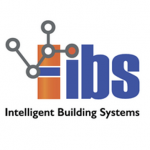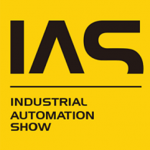Jenifer Tidwell s book Designing Interfaces marks a major turning point in the history of user-centered interface design. This area of design represented a decisive step forward in the development of consumer-facing applications at the turn of the 2000s. Since then, the design professions have become more specialized. Digital B2C players have benefited from this while B2B players still have significant room for improvement. More specifically, in the field of SCADA, HMI design is still not implemented frequently enough. This is a useful asset that should not be overlooked.
Have you ever heard or said “Can you do this for me but make it look better”? Of course, it’s possible to just work on the color of rendering (User Interface – UI), but the role of design is not just to “make something look good”.
And this is what we’re going to explore in this article…
Through our experience in the field, we’ve noticed that a whole area of SCADA app design is very often overlooked. This is the ergonomic component of user interfaces: from design of views, to sequencing of mimic diagrams, to graphical rendering of the whole app (User Experience – UX). In fact, this kind of design involves a lot of science and only a sprinkling of glitter.
Once upon a time… the birth of HMI design
So let’s go back in time. In the beginning, there was… almost nothing.
Designers of HMIs (human-machine interfaces) at this time used what were known as pattern libraries to industrialize their creative processes. For example, something that may seem obvious to us today, such as the “hamburger menu”, hasn’t always been so evident. All the experience gained by the pioneers in the field has been turned into guides and standards so that this knowledge can be shared and made a reality. One has only to look at the development of consumer-facing tools (YouTube, smartphones and the web in general) to understand the far-reaching graphical transformation of user interfaces.

Through pooling this knowledge over the years, a whole range of professions specializing in UX/UI design has emerged, for example, designers of user interfaces. This trend is starting to generate significant gaps between “consumer-facing” user experience (UX) and the “business” user experience of professionals. SCADA users already have considerable experience of these discrepancies. Hence the importance today of using modern tools capable of offering advanced graphical functionalities to allow the creation of intuitive interfaces fully adapted to end users.
But why is design important?
One could rightly argue that the stakes involved in managing alarms at Chernobyl for instance are in no way comparable to those of increasing watch time on YouTube. However, the good HMI ergonomics seen in an application such as YouTube allow users to find the information they’re looking for in record time. Have you ever noticed that you can spend a considerable amount of time sitting in front of this kind of app without feeling any fatigue or frustration?
By applying the best practices of these consumer-facing digital platforms to SCADA solutions, we can considerably improve an operator’s user comfort and thus enhance their efficiency. Coherent representation of information and easy access to it are crucial challenges if we want to avoid breakdowns and costly disasters in terms of material goods, and in some cases, human lives.
Another neglected area is that of “accessibility”. A design is said to be “accessible” when it takes into account the various disabilities that can adversely affect use of an HMI. The most common example is color blindness which can lead to crucial information being misread. Another factor that we need to consider is the working environment of operators. Performing underground maintenance without a network or monitoring screens for long periods of time without sleep are all disabling situations (fatigue, stress, offline applications, etc.).
Ergonomics, intuitive interfaces, operator comfort and accessibility are all ingredients that will need to be included in the HMIs of the future.
What about design in SCADA HMIs?
A number of books and guidelines have been produced on this topic. The best known is that of the ASM Consortium (in particular Bill HOLLIFIELD), implemented mainly in the oil & gas industry. And the work of Doug Rothenberg for the International Society of Automation (ISA) examines management of risk situations in industrial control processes. It’s clear from reading the first few pages of these guidelines that they offer very different approaches depending on the core business in question.
So how can we capitalize on these ultraspecialized UX/UI design approaches and extract the key principles applicable to as many scenarios as possible? Whether someone is an operator, maintenance technician, quality engineer, machine operator or production line manager, they must all be able to work in the best possible conditions and concentrate fully on their job.
The graphical interfaces (HMIs) they use must therefore be perfectly adapted to their specific needs. This requires ergonomics and accuracy so that their daily constraints (physical, mental and environmental) can be taken into account. The aim is to reduce errors while also improving productivity and operator comfort.
A tool such as System Design is the cornerstone of this approach, allowing the creation of user-friendly UX/UI interfaces.
We’ll explore this topic further in the next episode…
Conclusion
Like Johnny Utah in the movie Point Break, we need to start riding the wave as soon as possible. Digital consumer-facing players were quick to adopt it and capitalized as a result. Industrial and B2B digital players will need to embrace it fully if they want to prosper in the all-digital age.







